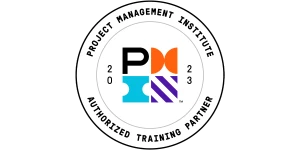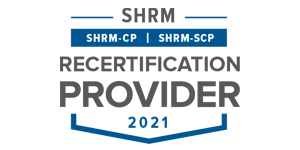Six Sigma Books, Reference materials and Quality Improvement Books
This section is intended to have Six Sigma and process improvement book recommendations by 6Sigma.us
For articles and other reference material on this site please visit.
– Resources Material
– Articles
– Six Sigma Project Example
– Six Sigma Method Step 0 – Step 6
Books and Reference Material Below
The Black Belt Memory Jogger: A pocket Guide for Six Sigma Success
A low cost tool that can bring you Six Sigma success. Help all of your Black Belts become the teachers, mentors, and leaders you know they can be.
Starting with a clear depiction of the DMAIC model and the roles and responsibilities that help ensure that Six Sigma methodologies become ingrained in the organization, The Black Belt Memory Jogger™ clarifies concepts and tools, from Critical To Flowdown through Control Plans, illuminating these methods in 25 detailed chapters of Six Sigma know how.
No Black Belt should undertake a Six Sigma project without a copy of The Black Belt Memory Jogger™ in his or her pocket. As a quick reference under tight timelines it will help keep projects–and concepts-on track. As a teaching tools for team members, it has no equal; small and easy to carry, comprehensive yet concise, and most of all, written from a training perspective so every topic and every page goes quickly to the critical point of interest. It is the perfect place for mentor and student to come together and begin to build new levels of Six Sigma success.
The Six Sigma Memory Jogger™ II
The newest pocket guide opens your team members’ minds to the power of Six Sigma to close the value gap between you and your competitors… Increase your company’s profitability…strengthen your market position…and make your company a happier, more successful place to work! Beginning with an overview and introduction to Six Sigma concepts, primary terminology, and the basics of the DMAIC method, this valuable pocket guide presents forty-one Six Sigma tools including the CTQ (Critical To Quality) Tree, FMEA (Failure Mode and Effects Analysis), Kano Model, MSA (Measurement Systems Analysis), process sigma, regression, SIPOC (Suppliers, Inputs, Process, Outputs, Customers), Six Sigma Storyboard, VOC Data-Collection System, and y= f (x) formula
Understanding Variation: The Key to Managing Chaos
Donald J. Wheeler, Ph.D.
We live in the Information Age, and much of that information comes to us in the form of numbers. Before numerical information can be useful,however,
it must be analyzed, interpreted, and assimilated. Unfortunately, teaching the techniques for making sense of data has been neglected at all levels of our educational system. As a result, throughout our culture there is little appreciation of how to effectively use the volumes of data generated by business, government, and the media. This book is the remedy.
Readers report that this book has changed both the way they look at data and the very form of their monthly reports. It has turned arguments about the numbers into a common understanding of what needs to be done about them. These techniques and benefits have been thoroughly proven in a wide variety of settings. Read this book and use the techniques to gain the benefits for yourself and your organization.
168 pages. Hardback. 32 Examples, 16 Figures, 4 Appendices, and Index.
Also Available: French Translation, Workshop, Video, and Training Kit.
Understanding Statistical Process Control
Donald J. Wheeler, Ph.D.
This internationally acclaimed textbook (often called the blue book) is widely used for teaching SPC and Continual Improvement techniques to those who work in manufacturing and process industries.
Wheeler and Chambers distilled over 60 years of practical experience into this book. W. Edwards Deming wrote in his foreword, “It is fitting to add my deep appreciation for the mathematical achievements of Dr. Wheeler. His understanding of theory, and its application, is guided by mathematical knowledge.”
Some of the unique material in this landmark text includes:
- How Charts Signal Inadequate Measurement Discrimination
- How to Use Count Data Effectively
- What if the Measurements Are Not Normally Distributed
- The Right Way to Assess Process Capability
- How to Use the Charts with Chemical Batches
- The Right Way to Compute Limits for the Charts
- Principles of Rational Subgrouping
- World-Class Quality and the Taguchi Loss Function
426 pages. Hardback. Over 64 Examples and Case Histories, 211 Illustrations, Graphs, and Figures.
Short Run SPC
Donald J. Wheeler, Ph.D.
Learn how process behavior charts can be used effectively when limited data is available.
Part One:
- Tracking the Process while Making Different Products Difference Charts
- Charts for Mean Ranges
- Zed Charts
- The Role of Moving Range Charts
- Difference Charts for Subgrouped Data
- Standardized Charts for Subgrouped Data
Part Two:
- Setting the Process Aim
- The Difference between Aim and Consistency Settings the Process Aim Using a Sequence of values
- Setting the Process Aim Using Difference Charts
- Setting the Process Aim Using Multiple Measurements
- World Class Quality
72 pages. Paperback. Appendix and Glossary
Building Continual Improvement: SPC for the Service Sector
Donald J. Wheeler, Ph.D.
with Sheila Poling
It is no longer necessary to try fitting manufacturing examples into the service world! This book specifically addresses the complicated issues of using Statistical Tools in a service setting. Don Wheeler presents these concepts in the easy, reader-friendly style of “Understanding Variation” but with the in-depth content of “Understanding Statistical Process Control.” Newcomers to these ideas will find new and comprehensive concepts discussed with great clarity.
All of the case studies in this book are taken from actual companies. Readers discover where to start, what to measure, how to measure it, how to understand the measurements, and how to effectively use their business information and data.
More than just teaching how to create process behavior charts, this book takes you beyond understanding data to help you build a framework in which to use it effectively.
329 pages. Hardback. 212 Figures, 62 Tables, Over 100 Examples, Exercises & Answers, Glossary of Symbols, Appendices, Bibliography, and Index.
Design and Analysis of Experiments, 5th Edition
By: Douglas C. Montgomery
This best-seller describes the methods and techniques used in the design and analysis of experiments. It emphasizes the connection between the experiment and the model that the experimenter can develop from the results of the experiment. This new edition includes a wealth of coverage essential for statisticians, engineers, and scientists from many fields.
- Simple Comparative Experiments
- Experiments with a Single Factor: The Analysis of Variance
- Randomized Blocks, Latin Squares, and Related Designs
- Introduction to Factorial Designs
- The 2k Factorial Design
- Blocking and Confounding in the 2k Factorial Design
- Two-Level Fractional Factorial Designs
- Three-Level and Mixed-Level Factorial and Fractional Factorial Designs
- Fitting Regression Models
- Response Surface Methods and Other Approaches to Process Optimization
- Experiments with Random Factors
- Nested and Split-Plot Designs
- Other Design and Analysis Topics
DOE Simplified: Practical Tools for Effective Experimentation
By: Mark J. Anderson & Patrick J. Whitcomb
Design of Experiments (DOE) is a planned approach for determining cause and effect relationships that can be applied to any process with measurable inputs and outputs. DOE provides a statistical means for analyzing how numerous variables interact. In DOE Simplified – a comprehensive introductory text geared towards readers with minimal statistical background – the authors take a fresh and lively approach to learning the fundamentals. The book covers:
- Basic statistics for DOE
- Methods for collecting and displaying data
- How to draw inferences from data
- The purpose of confidence intervals
- Comparative experiments for testing hypotheses
- Blocking sources of variation from analysis
- Two-level factorial designs
- Analysis of variance
Also included is a free 180-day trial version of Design-Ease® DOE software.
Read, Success with DOE, an excerpt from the book published in the April 2000 issue of Quality Magazine.
For an explanation of F-tests, p-values and analysis of variance (ANOVA), see this excerpt from Chapter 2, “Simple Comparative Experiments”(p-value.pdf — 89KB).
DOE Simplified sells for $39.95. Order onlineor contact Stat-Ease at 1.612.378.9449. You may also fax your order to 1.612.378.2152 or e-mail info@statease.com. Credit cards are accepted.






